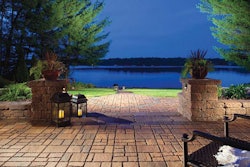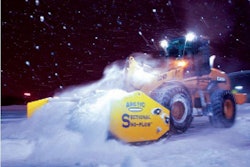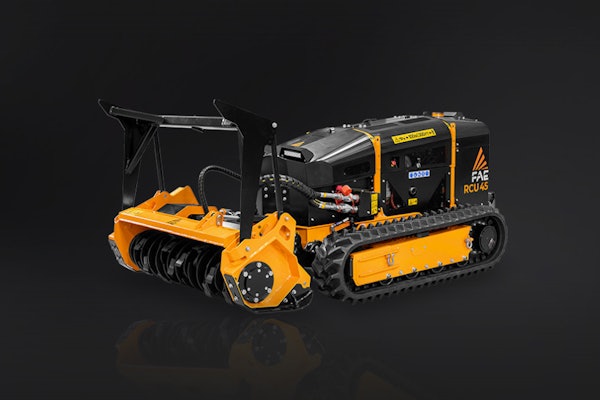Choose the Best Rotor for Residential Applications
Advances in technology can save you time and money.
Technologies such as smart controllers, central control and drip irrigation systems continue to improve irrigation system efficiency by using less water to keep landscapes looking their best.
Simple on the outside, hi-tech engineering inside: the intricacies of a Rain Bird 5000 series rotor
These advances are impressive, but what about one of the most well-known components of any irrigation system — the rotor? We see rotors applying water to turf and dense landscape plantings, seemingly operating just as they have for years. While today’s rotors may look the same as their predecessors, what lies beneath the surface definitely is not your father’s rotor.
Here, Mike Wendel, rotor product manager for Rain Bird’s contractor division, answers questions about rotor technology and how contractors can ensure they’re choosing the best for their applications.
What features make today’s rotors faster to install and maintain?
One of the most important features that makes rotors easier to maintain is a wiper-seal design. The wiper seal typically is a soft plastic material that interacts with the riser-stem to keep debris from entering the rotor and “sealing off” the rotor as the riser-stem pops up.
It’s not glamorous, but it’s one of the most critical components of the rotor. And choosing a rotor that has an inferior or poorly designed wiper seal can make or break a contractor’s year.
Speed of installation and adjustment are critical considerations, as well. For example, the slip-clutch feature in the Rain Bird 5000 Series rotor line helps adjust the left edge of the rotor’s stream to line-up with the landscape being watered. Instead of tools, use your fingers to adjust the left edge.
Contractors often get into the habit of installing the same rotor over and over, even when it may not be the best solution.
Rotors with self-flushing ports incorporated into their arc-adjustment slots also save a lot of time. As the riser-stem on these rotors pops up and retracts, a little burst of water clears the arc adjustment slot of dirt or debris. Without this feature, dirt builds up and bakes into the arc adjustment slot resulting in a rotor that has to be replaced because it cannot be adjusted.
What water-saving advances have been made in rotor technology in recent years?
Pressure regulation in rotors is an important water-saving advancement in rotor technology. When you regulate pressure, you regulate flow.
A 45 PSI optimizes nozzle-water distribution and maintains flow. When you regulate pressure from 85 to 45 PSI, you improve performance across the entire zone, saving a large amount of water. You won’t have misting and fogging, and when you eliminate that, you save water — and the client’s money.
Contractors who are serious about water efficiency should also consider using matched precipitation rate nozzles. The contractor chooses the radius and pattern for these nozzles and then the entire rotor zone has a matched precipitation rate.
Why is it important to get rotors that match the size of the area?
You don’t want to “fan out” the stream to make a rotor fit the landscape. In medium to large residential landscapes, you might use a rotor with a radius of 25 to 50 feet. If the site is smaller, consider using low-angle nozzles or a mid-range rotor with a radius of 15 to 35 feet, instead of fanning out the water stream.
When you fan out the water stream, the radius is reduced, but the spray pattern becomes inefficient and results in over-watering some areas and under-watering others.
What are the main reasons some contractors choose the wrong rotors?
Plain and simple: Contractors have a lot going on when it comes to running a business. They don’t always take the time to learn about what’s new. Running a business is challenging.
One day, you might be selling a project; the next day, you might be running a crew, and on top of the other 99 possible things you might be doing, you have to manage the finances. As a result, contractors often get into the habit of installing the same rotor over and over, even when it may not be the best solution.
Contractors can spend their down time this winter season familiarizing themselves with what’s available.
They should reach out to their distributors and manufacturer sales reps to learn about the new technologies that save water, money and labor.











